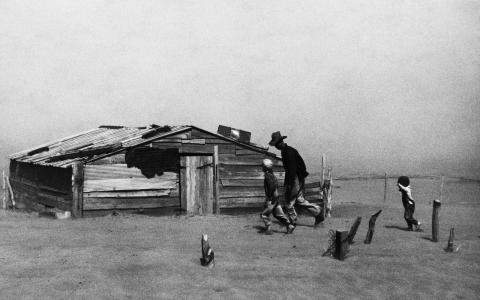
(Yahoo!Finance) - The recent synchronized selloff in stocks and bonds has crushed one of the most popular strategies for long-term investors: the 60/40 portfolio.
According to data from strategists at Bank of America Global Research published last week, the 60/40 portfolio — a mix of 60% stocks and 40% bonds — was down 19.4% year-to-date through the end of August, on track for its worst year since 1936.
Through the end of August, the S&P 500 was down over 16% year-to-date, while long-term Treasuries were down over 20% and investment grade corporate credit was down 13%.
Stocks struggled to kick off September on a positive note last week, with all three major averages sliding ahead of the long weekend. The August jobs report released on Friday did not deter investor fears of continued aggressive interest rate hikes from the Federal Reserve later this month.
And after rallying from mid-June lows through mid-August highs, the S&P 500 has erased about half of its ~17% gain over this period, a sign to the team at BofA this was just a "typical bear market rally." Including last week's losses, the S&P 500 is off some 17.6% so far this year.
“The 17% rally off the June lows appears to have been just a typical bear market rally, which occurred 1.5 times on average per bear market," BofA wrote. "Our bull market signposts continue to show no real signs of a bottom."
Back in mid-July, Bank of America cut its year-end S&P 500 target to 3,600 from 4,500 and called for a "mild recession" to hit the U.S. economy in 2022.
"September has seasonally been a weak month (second weakest avg. return of +0.1% & hit rate of 56%) and we expect more pain in the market with our 3,600 year-end forecast," the firm added.
The poor performance of the 60/40 portfolio this year shows the challenges for investors haven't only come in the stock market but the bond market as well. Though market history tells us this is perhaps not as unique a circumstance as it may otherwise seem.
"Brief, simultaneous declines in stocks and bonds are not unusual, as our chart shows," Vanguard’s chief economist for the Americas, Roger Aliaga-Díaz, wrote in a note this summer.
"Viewed monthly since early 1976, the nominal total returns of both U.S. stocks and investment-grade bonds have been negative nearly 15% of the time. That's a month of joint declines every seven months or so, on average," Aliaga-Díaz wrote.
"Extend the time horizon, however, and joint declines have struck less frequently. Over the last 46 years, investors never encountered a three-year span of losses in both asset classes."
As Aliaga-Díaz noted, the goal of a 60/40 portfolio split between stocks and bonds is to achieve annual returns of around 7% on average. But an average annual return of 7% doesn't mean most years will see a return of 7% in most years.
Data from JPMorgan Asset Management, for instance, shows that while the S&P 500's average annual return since 1980 is just over 9%, the index has gained 9% in a year just once over that span.
And for 60/40 investors, recent history offers an example of how this average performance can work out over time.
"During the three previous years (2019–2021), a 60/40 portfolio delivered an annualized 14.3% return, so losses of up to -12% for all of 2022 would just bring the four-year annualized return to 7%, back in line with historical norms," Aliaga-Díaz wrote.
"This isn't the first time the 60/40 and the markets in general have faced difficulties — and it won't be the last," Aliaga-Díaz wrote. "Our models suggest that further economic travails lie ahead and that market returns will still be muted. But the 60/40 portfolio and its variations are not dead."
By Dani Romero · Reporter



